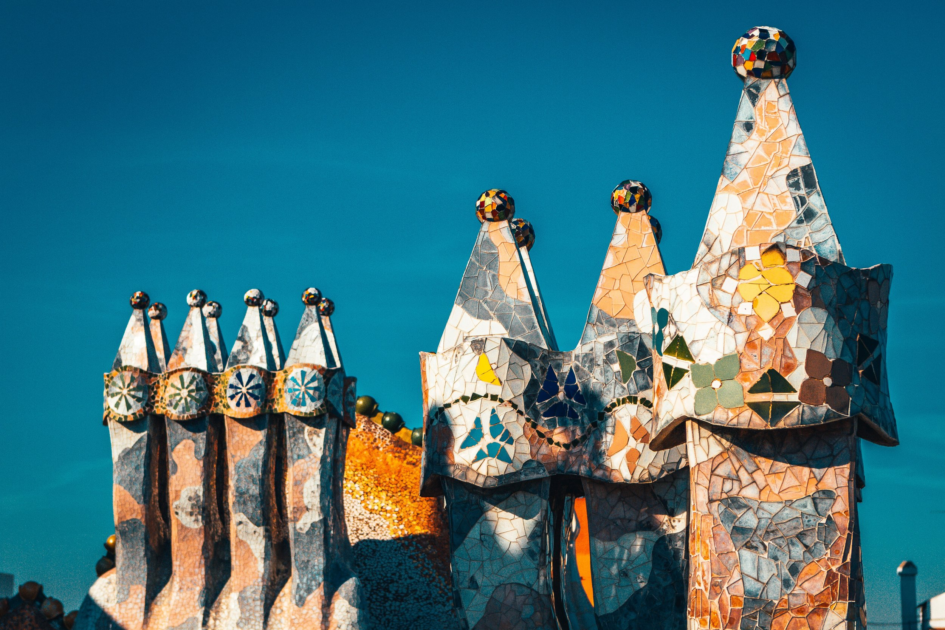In 2018 the cosmopolitan city of Barcelona received approximately 9.06 million international visitors, making it the 18th most visited city worldwide. Not bad for a city that only made a name for itself after the 1992 Olympics. Since then, Barcelona has transformed into one of the most metropolitan places to visit, with the huge advantage of having a beach (albeit manmade), intrinsically locked city lanes and mountainous terrain. This doesn’t go without a few hiccups, such as anti-tourist protests and political unrest regarding independence in the region. Yet, Barcelona continuously evolves and bounces back – refusing to cave into the drama. Cruise ships dock in, national and international flights remain as in demand as ever and you need to be quick when booking train tickets. This, everyone, is Barcelona.
L’EIXAMPLE
So what is it about the city that makes it so special? There is a melting pot of things to discover. The maze-like roads, particularly in the Eixample district of the city, feature properties designed by talented architects such as Josep Puig i Cadafalch, Josep Domènech i Estapà, Josep Vilaseca i Casanovas and perhaps above all Enric Sagnier i Villavecchia. Balconies are curved, decadent glass sunrooms perched either at the back or front of the buildings, and intricate detailing lends itself to the modernism era. It’s like a step back in time. The district neatly splits itself between left and right, with the famous Passeig de Gracià in between. There, you can find the incredible works of Antoni Gaudí, as Casa Batllò and Casa Milà reside on this bustling street. Further up, you’ll make your way to the breathtaking Sagrada Familia church, which is still in the works.

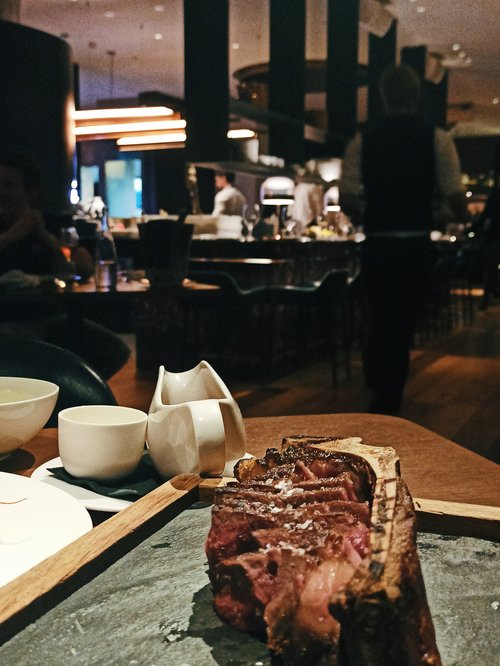
The right side known as Dreta de l’Eixample is where you’ll find some fabulous boutique places to stay such as the luxury-driven and well-appointed Almanac Barcelona, Casa Llimona, Seventy Barcelona, Cotton House and hip Casa Bonay. All of them are perfect in terms of location as they are within walking distance to key sights and are surrounded by great places to eat. Pizza joint Parking Pizza and their sister restaurant that serves Lebanese food, Parking Pita, are a must when around this side of town. For quality coffee or a quick bite head over to the coffee shop within Casa Bonay, or get in early at Granja Petitbo for fresh juice and delicious breakfast options. Also in mid-2019, DelaCrem’s ice cream master, Massimo Pignata, opened the Obrador on Passeig de Sant Joan nº59.
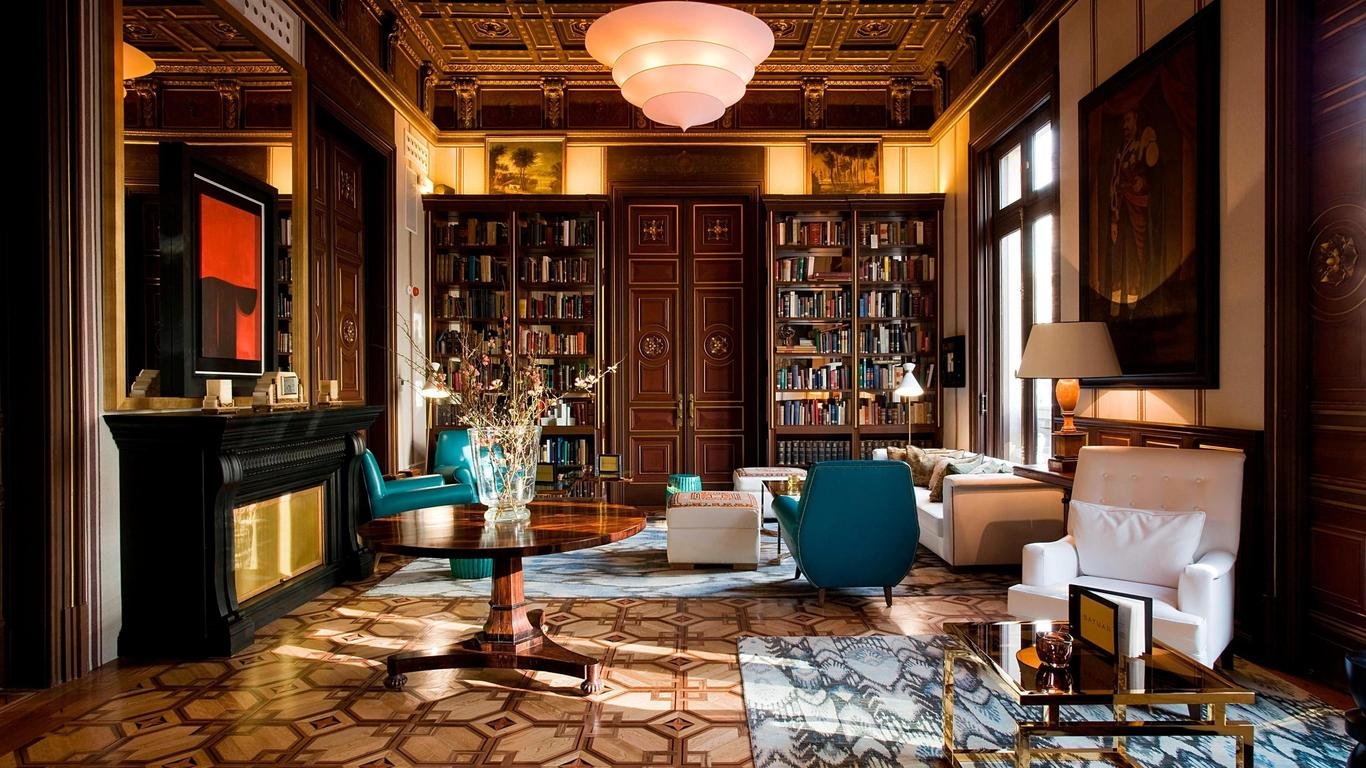

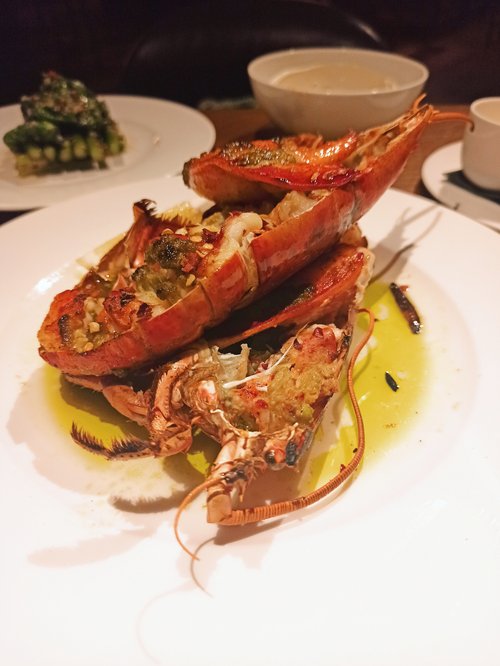
Esquerra de l’Eixample refers to the left side of Eixample and connects from the centre down to Plaça d’Espanya. Just like its counterpart, it is lively and has a great balance between those visiting and locals. Take a turn off Passeig de Gràcia or Plaça de la Universitat and take a stroll around this barrio. Enric Granados is a long street that takes you up to Diagonal. On route, you’ll find popular cafe-gallery Cosmo, a staple on the street and DelaCrem (first business opening), one of the best gelato places in the city. It isn’t strange to find long queues for pistachio gelato or good quality coffee. For those looking for an upscale dining option MR PORTER Barcelona is a sexy cosmopolitan steakhouse by Casa Milà. They also have a fantastic bar serving an impressive selection of creative cocktails and drinks, making it a great option to kickstart a night out in the city. Other favourite places include Japanese restaurants and grill Robata and a tasting menu experience at Gresca restaurant is a must. If you like Lebanese food, why not pop by Albe, a restaurant that fuses Catalan cuisine with that from Lebanon. Live like the locals, grab a bar stool and enjoy an aperitif at Vermuteria Colmado. They also serve tasty tapas, we recommend opting for the latas (tinned goods). It happens to be a short stroll away from Hotel Pulitzer, which we recommend if you want to stay somewhere fairly affordable, social and central.
Heading further down you have a fairly new hotel (opened 2019) 128 Magatzem, a former warehouse transformed into a boutique hotel further down closer to Plaça Espanya. Tea room UGOT Bruncherie is a lovely place should you find yourself craving something sweet or simply in need of a sturdy brunch. The French chic and shabby style with flamingo wallpaper makes this a very Instagram-friendly establishment. Foodies should head to Bar Alegría, for delicious tapas in a casual setting. Do visit Joan Miro Park, on a sunny day it’s easy to find shade, and we highly recommend getting a shot of his Dona i Ocell sculpture, which stands at 22-metre high, and is quite picturesque along with the Las Arenas mall (former bullring) in the background.


SANTS-MONTJÜIC
It’s worth also noting that the area surrounding Sants station is also undergoing quite a change. Nobu hotel opened in 2020 and is right next to the station. It seems an unlikely location, but given the number of visitors the city attracts and those arriving nationally for business and pleasure, it makes sense. Other little cafes and shops have also started to pop up in the area. There is the Casa Do Açai Brunch and Coffee, which serves delicious fruit bowls and The Fish & Chips Shop brand has a gluten-free edition on Calle Casanova. One of the prominent symbols of the area was the Modelo prison, which closed its doors in 2017. It is now being revamped into a cultural hub. You can find bold street art and little spaces to hang out. The project is scheduled to be fully completed in 2021, with public parks, homes and new facilities, all to regenerate the area.
Southwest of the city centre is Montjuïc, a hill with glorious views of both the harbour and urban districts. It hosts the former royal palace, which is now the MNAC museum, Fundacio Miro, the old Espanyol football team stadium and at the foot of the hill is CaixaForum. This, aside from the magic fountains is what Montjuic is commonly known for – making it a great pit stop for families visiting Barcelona. We’d also recommend visiting the botanical gardens, where you can stand aside cacti from California or sit down with a picnic in some of the Renaissance-influenced gardens such as Jardins de Joan Brossa. Like horses? There are stables. Head down from MNAC to La Foixarda, where if you’re lucky, you can enjoy a drink while watching horses gallop in the afternoon. This area, in general, was transformed thanks to the 1992 Olympics, several centres, swimming pools, rugby fields and running tracks are still very much in use more than 20 years on.

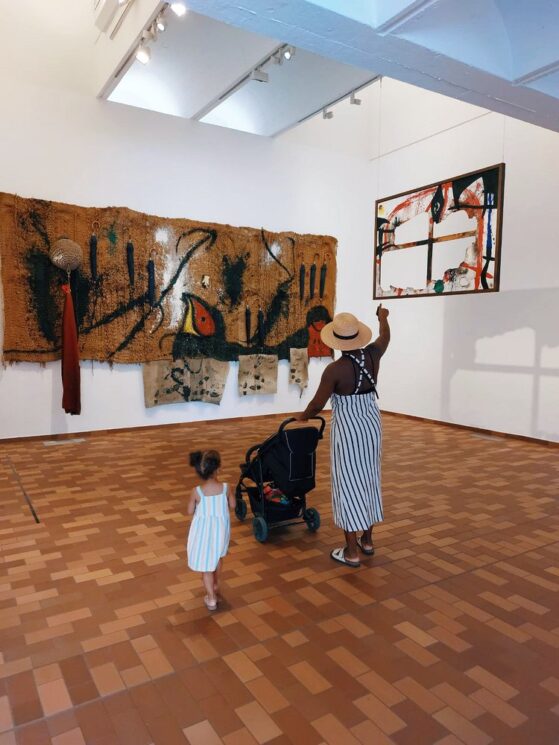
SANT ANTONI & POBLE SEC
The Sant Antoni neighbourhood has undergone quite a change in the last decade. You´ll find pretty balconies, small delis, and more day-to-day shops in the busy working barrio. Most notable of the changes in the renovation of the Mercat de Sant Antoni, which was designed by Antoni Rovira i Trias in 1882. Renovations started in 2007 and took several years to complete, as thy found Roman ruins and had to temporarily suspend the project. Some great places to eat include El Sortidors del Parlament for tapas and Benzina, an Italian restaurant down a cute little cul-de-sac off Parlament street. Manso’s cafe is a fantastic little Swedish cafe that serves the most delicious cakes, smoothies and all things required for a much-needed fika – definitely worth a visit whilst in the area.
Across the road from Parallel is the Poble Sec neighbourhood, famous for its bars clubs and tapas restaurants. We suggest popping over to Hotel Brummell. It is the perfect spot before or after a long walk in Montjuïc and they have a pretty courtyard for drinks and food. Quimet & Quimet in Poble Sec, Barcelona is a must if you are visiting the city, and also for any locals. It gets very busy but it’s definitely worth it!

BARCELONA OLD TOWN
Back to the centre, you’ll find a plethora of places to visit. We suggest that you use Plaça de Catalunya as a reference. La Rambla from Plaça de Catalunya down takes you to the Barcelona port area (Mar Rambla) and from Passeig de Gràcia up takes you to Diagonal and the Gràcia neighbourhood. If it’s your first time visiting you might want to visit La Rambla and La Boqueria market, however, you have Raval and The Gothic Quarter on either side conjuring up bars, restaurants, interesting squares and some impressive architecture. The Gothic area is quite enchanting, with Barcelona Cathedral at the entrance.
Stroll through the narrow streets that surround the cathedral and don’t forget to look up, as here is where you’ll find gargoyles and other mythical creatures and animals. Do take your time to go inside the cathedral and visit the cloister, which is famous for the Font de les Oques (Well of the Geese). The Lieutenant’s Palace known as La Lonja, Plaça del Rei and the Roman columns are the main attractions to see. You’ll definitely spot interesting details on doors, balconies, signs, etc. while exploring the area. If you find yourself wanting a bite to eat, we recommend Bistrot Levanté, a Lebanese-influenced bistro right in the middle of the Placeta de Manuel Ribé. They serve an incredible brunch menu that includes shakshuka, love toast and eggs with chickpeas. Their evening menu is concise and mouth-watering and smartly paired with natural wines.
You can also visit Čaj Chai, a little tea place that arguably serves the best chai in town. Also, a restaurant at Hotel Neri just around the corner in Plaça de Neri serves delicious culinary delights and is set within a pretty and historical building. Grand Hotel Central is a luxury stay on the edge of the Gothic Quarter and El Born—two of Barcelona’s most iconic neighbourhoods in the Old Town. It’s known for its iconic rooftop with panoramic views and the lively Can Bo restaurant.

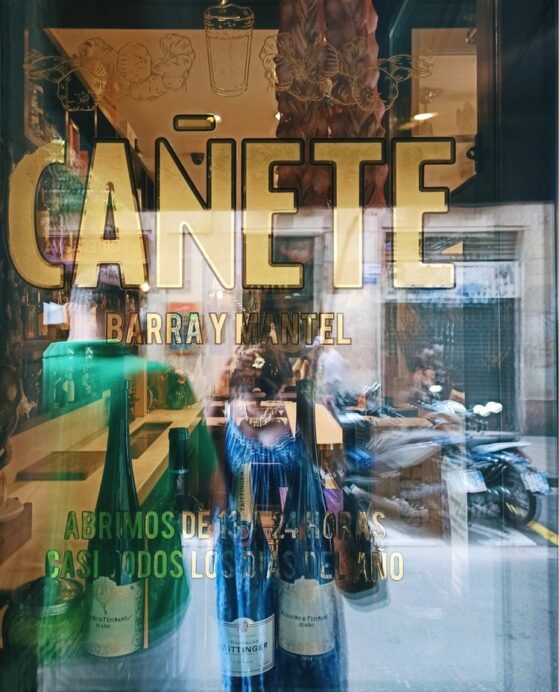
The Jewish quarter known as El Call (The Call) often gets overlooked but shouldn’t, as it is a relatively quiet zone with a breadth of history. For example, it is home to one of Europe’s oldest synagogues. Jewish baths and ruins are intricately constructed underground. The Jewish community was present in Barcelona from the 9th to the 14th century. You can also go to Caelum and enjoy cakes baked by the monastery’s nuns. It would be rude not to. You can get some fantastic and tasty traditional cakes and pastries made with egg yolk, among other salivating options.
One can’t go to Barcelona without visiting the cultural and hip Born neighbourhood. As it borders Barceloneta, it’s quite popular during the summer months, but the barrio which is home to yet another cathedral, the Catedral del Mar (Santa Maria del Mar) is a great place to shop. Down the narrow, winding streets, you can find an array of urban or cosmopolitan boutique stores. For children’s clothing, there are Tiny Cottons and Konfetti Kids. Womenswear stores such as Ivori Barcelona, Coquette, Miriam Ponsa and Biscuit are a few of our favourites. For shoes, Miista has beautiful cosmopolitan creations.
If you head that way, do take the time to visit the Picasso Museum. They often have temporary exhibitions, and the museum itself is a beautiful display of Picasso’s work. If you’re still in the mood for more museums, head over to the Chocolate Museum on Carrer del Comerç. Need we say more? When we need a bite and are in the area, we love the following restaurants: Bar de Pla, Rasoterra, Mosquito Tapas, Tens Tapas, and Bar Celta Pulperia. If you plan on having a picnic or enjoying eating on the go, you must check out Funky Bakers! This neighbourhood now hosts Borneta, a new boutique hotel by Ciutadella Park. Borneta is a great location for exploring the city. It has a bar and restaurant, Volta, which serves delicious Mediterranean dishes and has pretty pockets to unwind and relax.
GRÀCIA
Gràcia, once a separate town, is a neighbourhood that has a unique vibe of its own. Initially, the area comprised 3 villages, hence the district’s scale. Gràcia is known for being somewhat more bohemian, alternative, relaxed, and local. The location is strategic, given that it rests at the top of the city, just above the Diagonal with Passeig de Gràcia. It is a fantastic and charming place to walk, mainly because there are many pretty plazas, many of which have historic emblems, and casual bars/cafes/restaurants where you can have a drink or grab a bite. The most iconic include Plaça del Sol, Plaça de la Revolució and Plaça de la Villa de Gràcia.
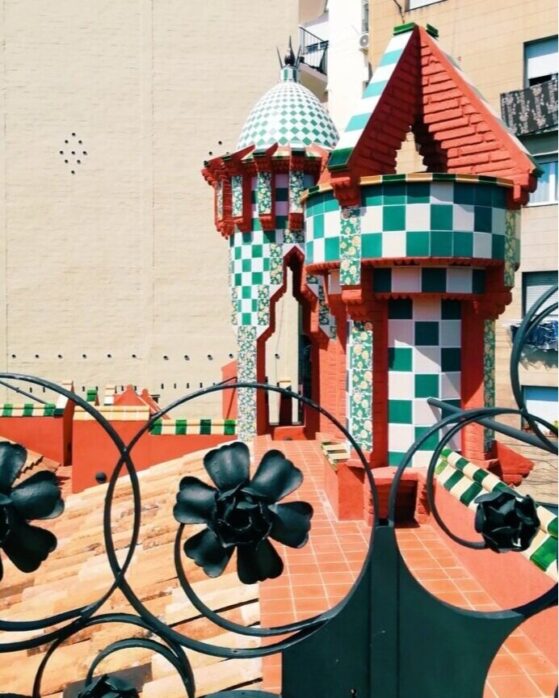
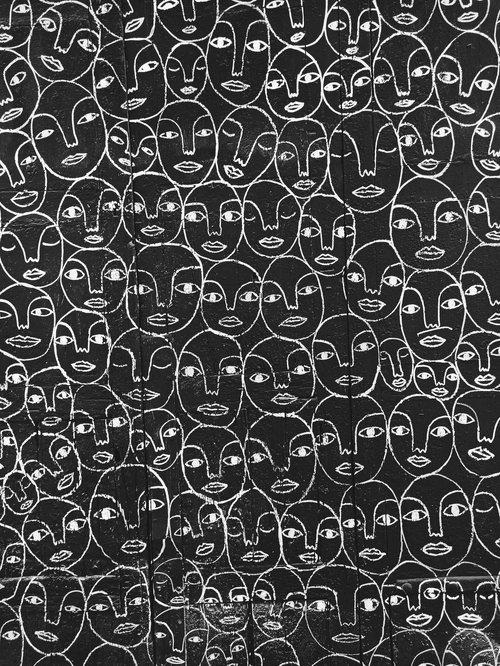
When we are in the area, we always visit Fromagerie Can Luc to delve into a selection of delicious cheeses from the region. A flat white at SlowMov Cafe also doesn’t disappoint. The specialty coffee roasters have been a hit on the scenes since they opened their doors and not only provide special blends at wholesale but training too. We highly recommend visiting Antoni Gaudi’s Casa Vicens, a psychedelic and pretty tile-lined treasure in the barrio. Llibertat food market, designed by architect Miquel Pascual, was initially constructed in 1888 and refurbished in 2009. It is a great place to pick up locally-sourced treats from local sellers and familiarise yourself with the produce.
If you prefer self-catered accommodation with a modern design flair, take a look at DestinationBCN. They have several apartments and rooms well located throughout the city but if you want to be close to Enric Granados and within walking distance to Passeig de Gràcia and Gràcia neighbourhood, we thoroughly recommend their Marimon apartment on Diagonal. The one-bedroom, one-bathroom penthouse is a special abode with a rooftop terrace and a glorious view.
Images, Sivan Askayo, Unsplash, Cotton House Hotel, Hotel Pulitzer, Hotel Brummell, Hotel Neri.
